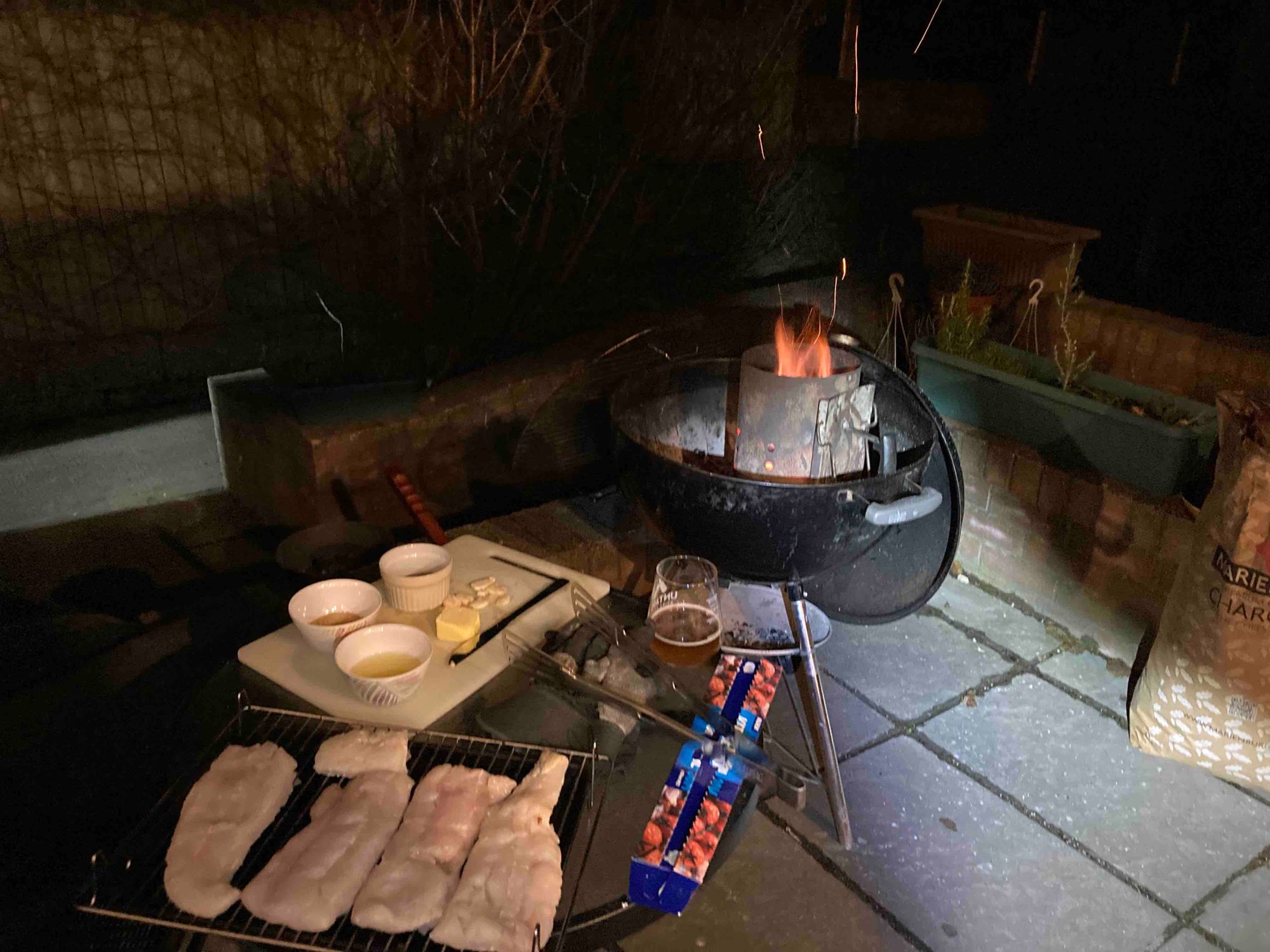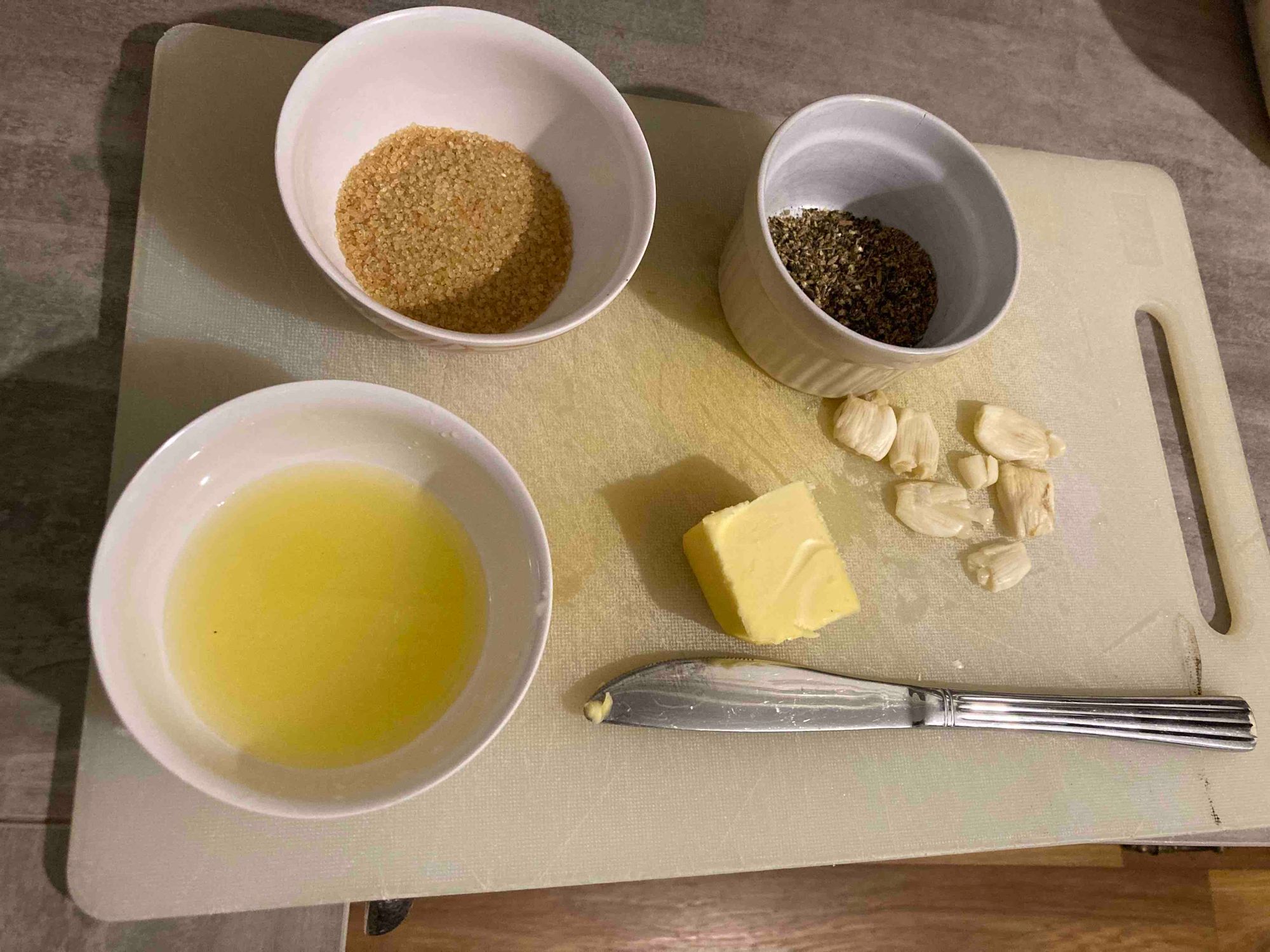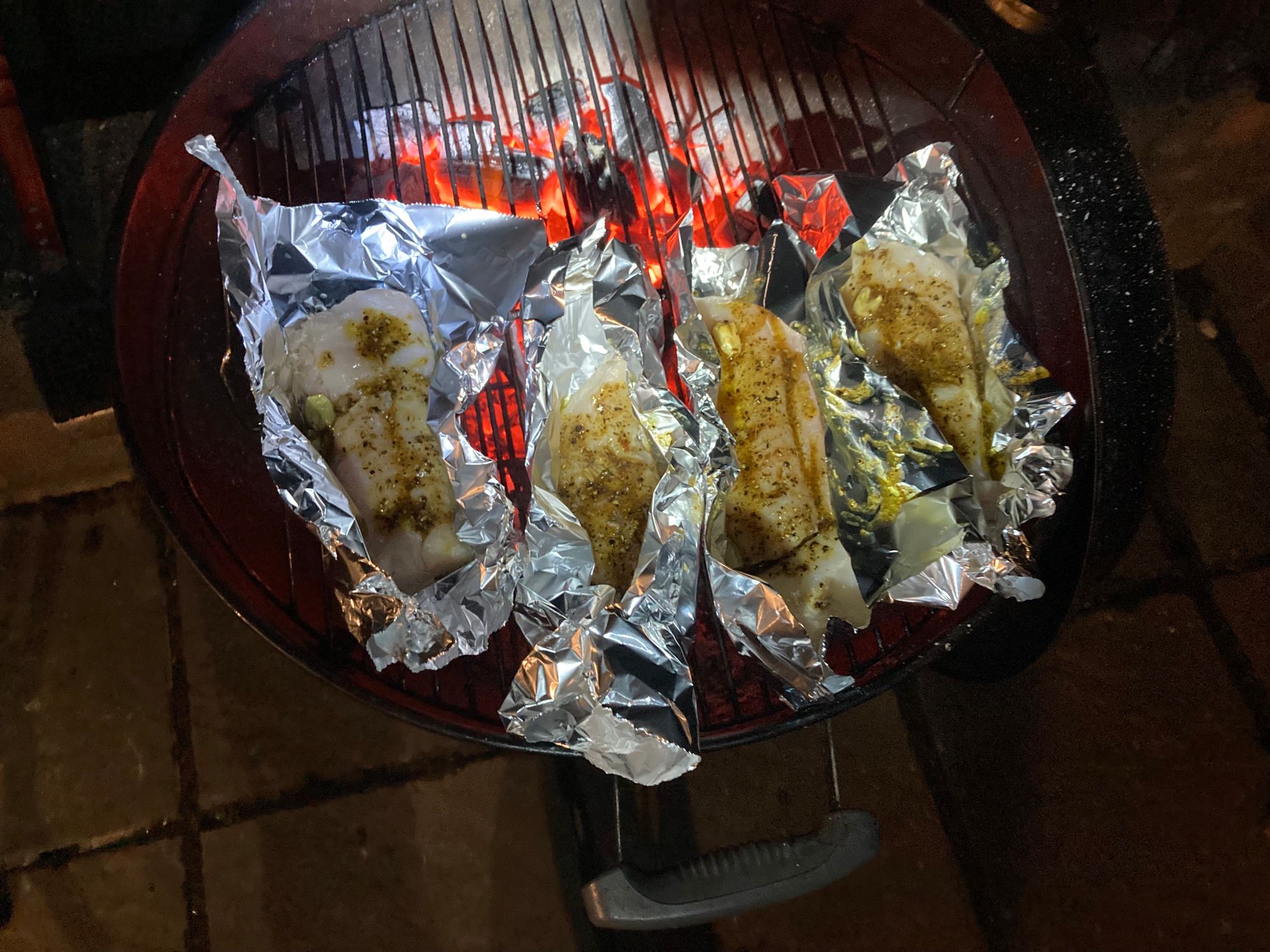Hake Under Moonlight

It was not quite a full moon last evening as I prepared this fish dish for the barbecue. It was a little thrown together with whatever ingredients I had to hand, but worked out really well.
At this time of year the evenings have not quite lengthened into Spring although the month has changed to February. Looking forward to barbecuing during daylight for our dinner time soon! But it does give me a chance to enjoy a spectacular night with the moon shining down on my patio.

Dry Brining
The main thing to note was that I salted the fish about forty-five minutes to an hour before cooking as a dry brine. Since learning more about how dry brining can unlock so much in outdoor cooking, I’ve been trying it with everything.
Small, thin fish pieces like these do not need as long for the salt to be absorbed. I am a little cautious of fish, so I placed it back into the fridge during the time it was dry brining, rather than leave at room temperature. Also I did not bother to add salt to the skin side of the fish. But I think it was successful – when I took the fist from the fridge, the salt had been absorbed and and the surface of the fish was dry, just like happens to meat when dry brining at room temperature.
Sauce
This sauce is simple and quick to make, and can be prepared directly on the barbecue using a suitable pan. I am using a cast iron pan with integrated handle, so there are no bits that can melt off. The ingredients are as follows:
- unsalted butter – about 80g
- juice of 1 lemon
- some garlic cloves, crushed slightly
- crushed black pepper, about 1 tablespoon
- cumin seed, about 1 teaspoon
- onion powder, about 1 teaspoon
- dried, mixed herbs, about 1 teaspoon
- brown sugar – about 1 tablespoon

Melt the butter first and then stir in all the rest of the ingredients. Once the brown sugar is dissolved, the sauce is ready to use. Don’t keep the mixture over the heat too long or the sauce will begin to reduce. I had to add a little extra butter because I made that mistake.

Foil Steaming
I could have fried the fish pieces in the pan, but I find that hake can fall apart a bit too easily. So I decided to place each piece in some foil, pour over some of the sauce, and then loosely cover the foil over. This allows them to gently steam in the sauce and their own juices.

The barbecue was nice and hot, about 200˚C, and I used indirect heat. The hake only took about fifteen minutes to cook this way. You can check whether the fish is cooked by gently unwrapping one of the pieces and using a fork to test the fish. It should flake easily and be opaque all the way through.
Serve the fish by just lifting the foil packet and placing directly onto the diners plate.
Foiled Again
I really need to figure out an alternative for using foil on the barbecue. But it is so versatile that it becomes the easiest choice. Foil is generally not reused and since it comes into contact with food, is difficult to clean and recycle. Many of the alternatives, such as beeswax, glass containers or silicone, may not be a good choice for an alternative when cooking on a barbecue.
The delicate nature of the fish is why I was put off frying the hake, but maybe that should not be an excuse. I could have used more butter and lemon juice to make more of the sauce – that should have allowed the fish to cook with indirect heat and not stick to the pan. If my cast iron pan had a cover even better. The main issue is there is not a whole lot of space on the pan for four pieces of fish.
I have made progress when resting a roast – rather than cover in foil, I leave on the barbecue having reduced the internal temperature to around 80˚C or placed into our conventional oven at that temperature and that works really well. Here are some of the other possibilities for foil cooking.
An alternative that I need to try is to use cedar wraps, but I have not found a supplier that provide decent sized sheets yet. Some eco websites suggest soaking the cedar wraps in water first and then using them exactly like foil. I am not sure how well cedar wood work for this recipe – will it retain the moisture like the foil does? I’ll update here once I try it. Weber do have a product that might work but seems like the juices will just run out each end as the wraps don’t look like they can be formed as well as foil.
Another option would be to find some restaurant style cast iron pans, small ones that can be used to cook and serve the dish. Usually they are place onto a wooden trencher so people can avoid finger burns. If I can get some small pans with lids even better.
I have used grilling planks before. These are just pieces of wood which are pre-soaked before cooking. The fish can be served directly on the piece of wood if desired. My main issue was that the sauce ran off the side and I had to baste regularly. Perhaps if I could get a trencher style piece of cedar, that has a deep enough trough for the fish and sauce, I can try this again. One thing to note is that the piece of wood will eventually burn up and no longer be useable.
The most likely alternative that I will try is to use an oven safe dish to place the fish (or whatever I am cooking in foil) into. A warning here before you put your best casserole dish on the barbecue is that they can get quite sooty after use. I’m sure that there will be negotiations with my wife over which of her dishes I can use. I regularly use a foil tray for cooking. I take care of it and clean it gently, so I can usually reuse the tray upwards of thirty or forty times before it begins to leak or to lose it’s structural strength. It’s still using aluminium, but the reuse factor is why it is a valid alternative to foil.